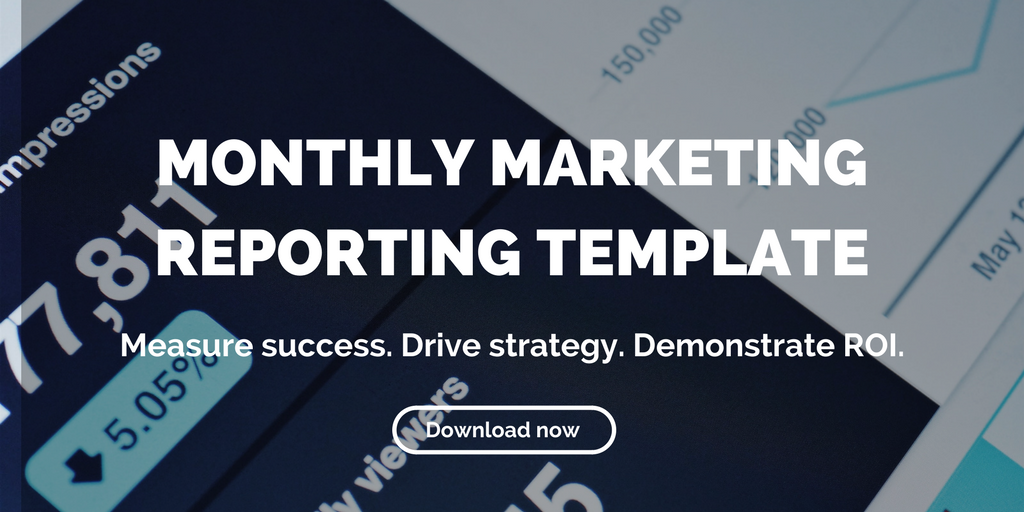Posts Tagged "target audience"

DIY Digital Marketing Strategy for Real Estate in Four Easy Steps
Looking to create a DIY digital marketing strategy for your real estate brand? Get started with these four steps.
Highlights:
- A digital marketing strategy is your clear path to targeting, reaching, and engaging with potential buyers.
- You have to know who your ideal buyer or renter is before you can begin crafting content that is informative, educational, and even entertaining to your target audience.
- Let your planning pay off by distributing valuable, effective content that your readers want to see
You know you need to have a digital marketing strategy for your property but getting started can be challenging. Where do you begin? Even the language around digital marketing can be intimidating to newcomers.
A solid digital marketing strategy is the foundation for reaching target buyers (or renters). Before you start writing blogs and making videos, you need to set goals. A digital marketing strategy is your clear path to targeting, reaching, and engaging with potential buyers.
Here are four steps to creating a successful DIY digital marketing strategy.
Steps to building a DIY digital marketing strategy for real estate
1) Who is your buyer?
Trying to write interesting and engaging content for an unidentified audience is nearly impossible. You have to know who your ideal buyer or renter is before you can begin crafting content that is informative, educational, and even entertaining to your target audience. First of all, nail down the details about your buyer personas to make that personal connection: What are their interests? Where do they gather information? How much money do they make? What drives their decision–making?
2) What is your goal?
What do you plan to accomplish with your digital marketing efforts? The answer should define your content goals and become a crucial part of your business goals.
Our real estate clients often focus on converting contacts/leads to sales, growing website traffic, and increasing revenue. Include both short and long-term goals and refer back to these goals to make sure you’re sticking to your strategy.
3) Distribute, distribute, distribute
Identified your audience? Check. Defined your goals? Check. Next: select the best platforms for distributing your content to get your property in front of the right potential buyers and tenants.
Social media is a digital playground for marketers but knowing where to post is just as important as knowing what to post. You’ll need to identify what platforms your target buyers are using and how to reach them on those platforms.
4) Get to work
Once you have created your buyer personas, identified your goals, and decided on the best platforms for your target audience, the fun begins: getting your content in front of potential buyers. Let your planning pay off by distributing valuable, effective content that your readers want to see.
Remember to think of your strategy like a body of water, ebbing and flowing. Your digital marketing strategy should be fluid and adjusted as needed. If your property features multiple units, change your messaging to reflect and highlight that variety (for example, a penthouse unit).
Final word of advice: keep up with changing buyer behavior, stay on top of new features on social platforms, and refine your strategy along the way.
Related posts:
- Infographic: Content Marketing Statistics Every Real Estate Marketer Should Know
- How to Use Guest Posting as Part of Your Content Strategy
- 10 Quick Ways to Grow Brand Awareness
Posts Tagged "target audience"

Google Analytics for Real Estate Marketers – 4 Steps to Get Started
Google Analytics is an extremely effective tool for real estate marketers to gain insights and shape strategy. These four tips will help get you started.
Highlights:
- Start by choosing what metrics to track.
- Figure out what works and what doesn’t.
- Paint a picture of your audience using hard data.
When it comes to gaining insights into real estate leads, Google Analytics is one of the most powerful tools out there right now. This robust, comprehensive, analytical tool determines how web users are interacting with your digital assets, including social media. The data that Google Analytics for real estate provides gives you invaluable insights into how your audience is interacting with your content, as well as how your content is performing over time.
Because this tool is extremely comprehensive, the options can be overwhelming at first glance. Understanding how to properly deploy this resource, and the metrics it provides, is your best bet for delivering value to your target audience, and effectively nurturing leads.
Here are four steps to get your marketing efforts started using Google Analytics for real estate.
1. Decide which metrics to track and identify key metrics
When you first start using Google Analytics, it’s easy to be overwhelmed by the sheer number of choices available to you for analyzing your real estate website visitors’ activity. It can seem tempting to track every available metric, gaining huge amounts of data. But your time and resources are much better spent if you take a step back and identify the right marketing reports for your real estate business.
As a benchmark, Phase 3 Enterprises suggests that real estate marketers track these six reports:
- Channel Report
- Source and Medium Reports
- Users Flow Report
- Frequency and Regency Reports
- Location Report
- Age and Gender Reports
Once you’ve chosen which metrics your real estate business should be tracking, it’s time to identify two or three metrics that will be your touchstones. These are the metrics that are critically important to the performance of your website and should monitored and analyzed regularly.
2. Start with the big things
Is there a page on your website that gets a large amount of traffic? That’s where you should be concentrating. Use key metrics to determine why that content is specifically intriguing to your users, and what led visitors to click and spend time there. For example, if one piece of content on your site outperforms another, ask yourself questions like:
- Does a higher click-through rate correlate with timing of emails sharing the content, social media posts, etc.?
- What are the top traffic sources for high performing content?
- How long are users spending on your content?
You get the picture. In short, if you identify the right questions to ask, Google Analytics for real estate will offer you the data to answer them—in turn giving you the tools to optimize your digital assets.
3. Find out where your website traffic is coming from
In a perfect world, users are visiting your site from multiple sources, instead of a single or just a few traffic streams. Gaining an understanding of where your traffic is coming from lets you devote resources to top-performing sources and adjust your efforts where they aren’t gaining optimal results.
Select “Overview” under the “Acquisition” menu to determine how much of your traffic is organic, social, from referrals, etc. The Channel Report will give you further details on where your visitors are coming from, as well as information about how traffic from various sources engages with your site.
4. Build an audience profile
Ultimately, one of the most important things Google Analytics can capture for you is a picture of your audience. This includes where they’re located, how they engage with your website, demographic data like age, and other buyer preferences. Some key audience characteristics to be on the lookout for:
- How much of your audience is new visitors vs. returning visitors?
- What devices is your audience using to access your digital assets?
- Where are your visitors geographically located?
The more you use the data to understand your audience, the more you’ll be able to optimize your digital assets to meet their needs and build and expand your audience base.
The bottom line
Google Analytics is your superpower when it comes to real estate marketing. No other tool gives you more comprehensive insights into your audience behavior, content performance, overall site performance, and more. Start using this tool today, and let data drive your real estate marketing efforts.
Related posts:
- How to Measure Social Media ROI with Google Analytics for Real Estate
- What Metrics Should You Track in Real Estate Marketing?
- How Pay-Per-Click Helped This Property Get 54 Leads
Posts Tagged "target audience"

Using Messaging Platforms for Real Estate to Deliver Content
The 4 biggest messaging platforms now have more users than the 4 biggest social media platforms. Here’s how marketers are leveraging messaging platforms for real estate to deliver content to target audiences.
Gone are the days when social messaging platforms were just about chatting or making plans with family and friends. You might be surprised to learn that “the combined total monthly active user count of the top 4 messaging apps has grown to 4.1 billion in 2018.”
Just to put that in perspective, that’s well over half of the world’s population and — perhaps even more strikingly — dwarfs the 2.19 billion monthly active users that Facebook reported in the first quarter of 2018.
It’s official: Social messaging platforms have surpassed “traditional” social media when it comes to active users. Not only that, marketers are taking notice, and beginning to think about how to leverage messaging platforms for real estate to deliver content to target audiences.
Popular social messaging apps include, for instance, WhatsApp, Viber, Line, Snapchat, and Facebook Messenger.
Tip: Use conversational content on messaging platforms for real estate
As you might expect, a key element in the successful use of using social messaging platforms is to tell your story conversationally. This means tailoring your content to the specific wants or needs of your target audience, creating a compelling narrative with your content, rather than an overt sales pitch.
This kind of storytelling is fundamental to content marketing.
“Messaging and chatbots represent the next logical extension of the content marketing mission,” writes Chris Frascella of the Content Marketing Institute.
According to Thomas Husson of Forbes, “Messaging apps will introduce a paradigm shift for marketers where interactive and contextual conversations will replace ad broadcasting. New conversational interfaces will drive deeper relationships between consumers and brands.”
You may be thinking that this is all well and good for marketing products, but how does it apply to real estate marketing? The truth is, if you have a content marketing strategy in place, chances are, you have a story to tell, and these are tools to help you do it.
Chatbots
Enter chatbots, the technology to turn your content into conversations. Chances are, you’ve already come face-to-screen with a chatbot and may not have even known it.
These computer programs simulate human conversation using auditory or textual methods. Basically, it’s software that communicates with your target audience inside a messaging app. Chatbots are already changing the way businesses interact with their prospects — and with each other.
If you’re thinking that you’re about to be replaced by a robot, relax. AI technology that could take the place of human interaction won’t happen anytime soon. Chatbots are a tool, and they need to be fed content and trained by human marketing professionals.
Tips for using chatbots
The first step is adapting your content for use in a chatbot conversation.
“You can’t just duplicate existing content in your conversational scripts,” says Frascella.
While the goals for your content are the same, the way it is delivered is different. That requires a shift in how it’s structured.
It’s also important to be mindful of timing. Because chatbots require users to opt into conversations, retaining permission to access your audience in this way depends largely on content and timing. This means delivering engaging, meaningful, and valuable content at regular intervals, but not intrusively.
For more ideas on creating a chatbot, check out this post.
Social messaging platforms for real estate are opening new doors for you to deliver personalized content straight to your target audience. Make the most of this opportunity!
Related posts:
- 10 Social Media Statistics for Real Estate Marketers 2018
- Good Real Estate Marketing Gets Personal
- Social Media Trends for 2018 Real Estate Marketers Need to Know
Posts Tagged "target audience"

Your Content Should Not Include a Sales Pitch. Do This Instead.
Trying to pass your sales pitch off as content will only hurt your content marketing efforts. Start helping potential buyers instead.
Think your blog is a refreshing new way to highlight your properties’ selling points? Do your blog posts include verbiage like “competitive rates,” “prime location,” or “investment opportunity?” Stop right there. Everyone you reach probably knows right away that you are trying to sell them something, and they will quickly move on.
As counterintuitive as it may sound, being “salesy” will make potential buyers look elsewhere, or run in the opposite direction — perhaps to your competition. The best way to win buyers and renters is to stop trying to sell. Content that helps prospective buyers envision themselves in your property is what will grow your business.
Nobody welcomes a sales pitch
Admit it: you tune out anyone that comes across as trying to sell you something. You get emails, voicemails, and social media updates with “information” that is really a not-so-cleverly disguised sales pitch. What do you do? Most likely you hit delete, or you do not read past the first sign of a sales promotion.
So you know deep down that “salesy” does not sell. Yet according to a recent study of 500 global marketers from the Economist Group, many content marketing programs are doing just that: being promotional throughout their content efforts. In fact, 93% of the marketers surveyed said they directly connect content to a specific product or service.
Prospective buyers see right through this trick. Like you, most of your potential investor base is turned off by an overt sales pitch.
Focus on your audience to increase yield
So what should your content be doing? Rather than forcing your properties on your potential investors, take the time to answer their questions. Be the expert advice they are seeking. Help them envision themselves in one of your properties. You can do this by:
- Keeping content informative and educational. Your content should hold value for your readers.
- Letting your content demonstrate expertise. It should give the reader a favorable impression of you and your real estate business. They should walk away trusting your ideas.
- Educating your readers about the amenities nearby and the neighborhood. Offer information about things to do nearby or events that make your location ideal for your target audience. For example, music lovers will love to know that they could be living near a concert venue; or parents will want to know about the local school system.
The philosophy of content marketing is to offer help, to educate, and, at times, to entertain your target audience. This is accomplished by focusing on your potential buyers’ needs and interests, not by overtly pitching your properties. When your buyers understand you’re not trying to force a sale at any cost, you gain their trust and respect, and this is what brings in sales.
Related posts:
- Marketing vs. Sales: Why There Shouldn’t Be a Competition
- Content Marketers: Don’t Fire Your Sales Staff
- Most B2B Buyers Use Social Media in Their Research




